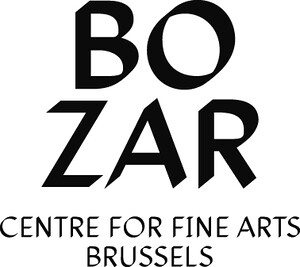Schrank
February 9–June 3, 2018
Rue Ravensteinstraat 23
1000 Brussels
Belgium
Hours: Tuesday–Sunday 10am–6pm
“As a school boy my cupboard (Schrank) was permanently in a mess with combs and sandwiches and schoolbooks living side by side. And this remained so. In other words, I cannot see the demarcation between objects, only their fusion.”
–Georg Groddeck
On the occasion of the exhibition dedicated to Fernand Léger, the Centre for Fine Arts is inviting the Belgian artist Benoit Platéus (1972) to present a series of works, the concept for which came to light in New York in 2016.
New York is a key city for Platéus just as it is for Léger in the eyes of whom it embodied “the most colossal spectacle in the world” (1931).
The tragedy of the Second World War took Léger to New York for several years where a colony of avant-garde artists was creating a unique momentum, as demonstrated by the famous photograph of the private viewing of the Artists in Exile exhibition at the Pierre Matisse gallery (March 1942) with, amongst others: Ossip Zadkine, Yves Tanguy, Max Ernst, Marc Chagall, André Breton, Piet Mondrian, Kurt Seligmann and, of course, Fernand Léger.
Up to this day, the study of the impact of the encounter between the fully matured European avant-garde with the emerging American art scene has not been fully completed. From these affinities with young artists such as Robert Motherwell and Arshile Gorky is born the movement of “Abstract Surrealism,” from which will stem “Abstract Exressionism,” embodied by Jackson Pollock. Léger travelled the length and breadth of the United States to give conferences and exhibit his works. After the Liberation he returned to France, where numerous young American students including Kenneth Noland, Jules Olitski and Ellsworth Kelly, studied in his academy.
From a purely formal point of view, the works exhibited by Benoit Platéus converge in more than one way with this ambiguous moment of transition in the history of art. One can’t help but be reminded of Max Ernst and his frottages: “Platéus uses this technique on the streets of New York to take imprints of telephone poles riddled with metal staples used for poster posting.” These almost topographic recordings, a form of urban archaeology, are subsequently projected and enlarged on canvas, and painted in shades which give the work an abstract feel.
The majority of Benoit Platéus’ work goes beyond the divide representation/abstraction, a fundamental aspect for an artist who uses composition and transformation/revelation to question the notion of the image.
The imprints of telephone poles are also a primitive form of photography developed thanks to a home-made developer: frottage. Platéus then uses pastel to transpose this first rubbing which undergoes a second transformation/apparition when projected and enlarged on the canvas.
On another level, which cannot go by unmentioned when speaking of Platéus’ intentions; this obsession with revelation is also reminiscent of Lewis Carol, through the looking glass—a journey into the subconscious.
Whether or not this search for a semi-absence occurs in the urban space is undoubtedly another point that Léger and Platéus have in common, both of whom celebrate the city in their own way, the former through faith in his future and his utopia, the latter through the undisciplined intervention of graffiti and street art, his background, the traditional practice of which he is now inverting.
With the support of Galerie Albert Baronian, Brussels


